Sooner or later in every occupation we come across the concept of ethics. And photographing nature is no exception. What does ethical conduct mean in nature photography?
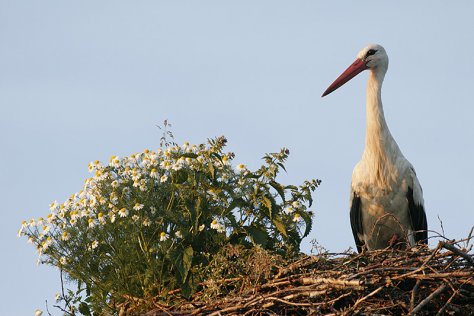
White storks are generally used to people nearby and normal caution is sufficient when photographing their nests.
There is one uncompromisable rule – the wellbeing of the photographed object is more important than any photo, however brilliant and unique.
This rule is simple. The purpose of nature photography is to bring to others a true and unadulterated nature. We want nature photography to lessen the alienation from Nature, to help in learning to know nature and to protect and preserve nature. It would be impossible to uphold these goals if the photographer were to harm his objects in the process of photographing them. This rule can be developed and expressed as the principle that if we take a photo of something somewhere then it should be done in a way such that if another photographer were to come to the same place after us, he should have the chance to make a new photo of the same object.
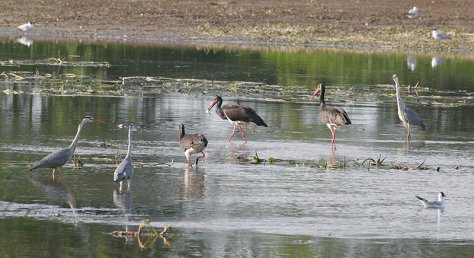
Black storks are birds of an unexploited nature. Photographing their nests needs in addition to particularly careful and cautious preparations also a special permit from the relevant authority. If we accidentally come on a nest of a shy bird species, the best move is basically to withdraw cautiously without photographing. If however we happen to come across the birds themselves, far from their nest, as for instance in the photo above where they came to look for food in this dammed up lake, the risk of disturbance is smaller and permits are not needed.
Damage to the photographed object can be of different kinds – the risk of physical injury, excitement or stress, becoming prey to a predator because of the doings of the photographer, or diminished reproductive success. Because different objects in nature tolerate human activities differently there cannot be one single universal behaviour rule. Depending on whether we photograph a geological object, plants, mushrooms, insects, birds or mammals we have to modify our behaviour accordingly.
How to handle one or another object? There only very good knowledge of nature helps. Knowing the photographed objects better helps us to adjust our own behaviour. It is reasonable that you can move somewhat more freely when you photograph the nest of white storks who are used to humans being nearby. Its close relative, the black stork, is however very shy of humans, and photographing the nesting-place of black storks also needs, in addition to very careful, cautious and thorough preparations, obtaining a special permit from the appropriate authorities.
Knowing nature is not only a matter of species. Even within the same species individuals can differ in their sensitivity to human actions. This too must be considered on photographing.
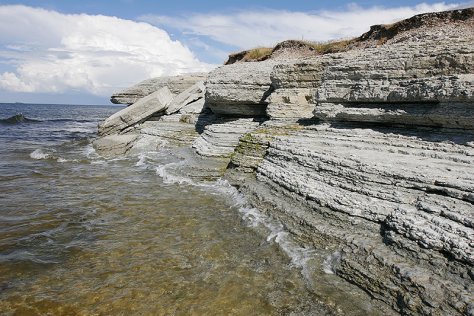
On photographing inanimate nature and landscapes the damage risk to the photographed object is small, but in making the photo one must still observe that animals or plants are not harmed in the process. The Osmussaar bank.
It is simpler with photographing geological objects such as banks, glacial boulders and landscapes, but not damaging the photo object, or unnecessarily disturbing for instance birds nesting on the edge of a bank or treading on a rare plant must be kept in mind here too.
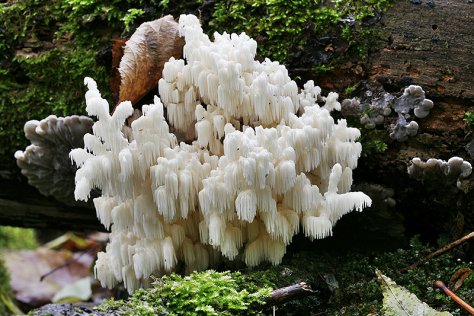
Photographing plants and mushrooms has to be done in such a way that the object is not inadvertently trodden down. That does not mean that we cannot lie down on the grass beside it. By observing the basic principles of public access right laws problems will be avoided. Coral tooth, Hericium coralloides.
The requisite to learn to know nature better is not limited to nature photography. The better we know our photographed objects, the better photos we will be able to take of them.
The ethics of nature photographing has another aspect. This touches on the photographer’s finished photos. Here the immutable key word is truth. Our aim is to show nature truthfully and naturally. When we edit our photos it is always with the purpose to convey an experience of nature that is as authentic as possible. And the history of how the photograph was made and finished is an unseparable part of nature photography. The photographer should always and honestly be able to tell how a particular photo was made.
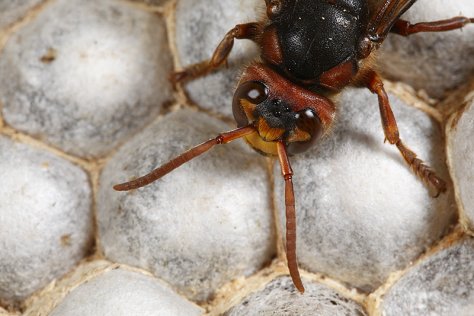
Photographing insects and other small mites is simpler because, unless we by accident happen to step on them, they are not particularly disturbed by humans. Neither have I seen any reference to, nor myself noticed, that a flashlight bothers them. The history of the photo above is however the following – on reaching Harimäe I found on the floor of the outside toilet a wasp nest pulled down by somebody, where the wasps tried to reorganise their normal life. So I could make this photo of the wasp queen inspecting the comb.
Summing up: – a nature photographer who acts ethically is true and considerate to his photographed object as well as to his audience in making his photos.
Links: http://www.looduspilt.ee/?page=artikkel&aid=95.













